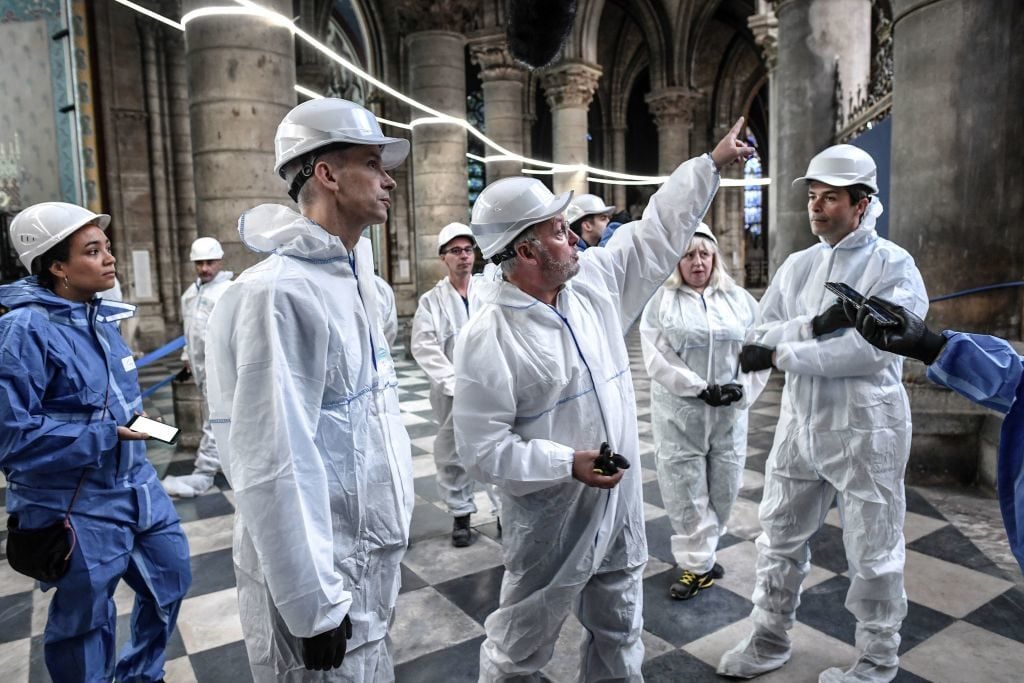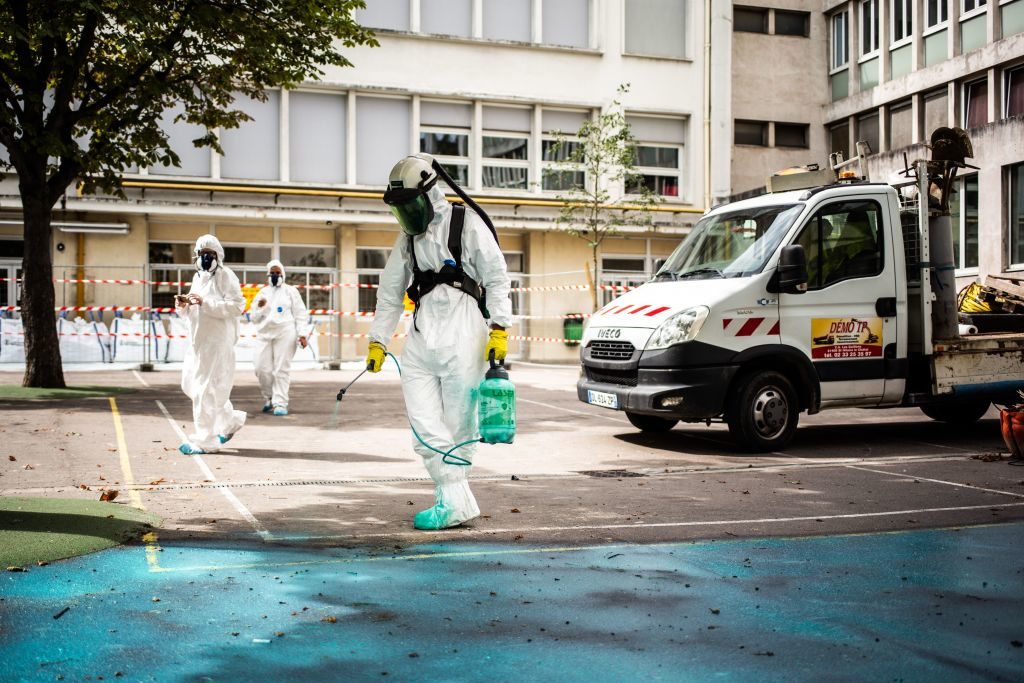Art World
After Traces of Toxic Lead Are Removed, Notre Dame Could Partially Reopen to the Public as Early as Next Month
Pending health and safety checks, the cathedral’s forecourt could soon reopen.

Pending health and safety checks, the cathedral’s forecourt could soon reopen.

Naomi Rea

Paris officials have announced that the forecourt in front of the fire-damaged Notre Dame cathedral could reopen to the public as early as next month. Local authorities said on Wednesday that the square will be accessible as soon as it gets the all-clear from health and safety officials, who are still concerned about the presence of toxic lead particles in the area.
Speaking in front of the French parliament on Wednesday, the prefect of the Île-de-France region, Michel Cadot, and the secretary general of the Paris prefecture, Magali Charbonneau, said that they hoped to reopen the square in March, although health and safety remains a priority.
“We want to return the square to Parisians as quickly as possible, and we want to ensure that they walk on it safely,” Charbonneau said, according to AFP.
When the cathedral burned down in last April’s devastating blaze, hundreds of tons of lead from its iconic spire melted, dispersing lead particles into the air, which settled in the structure’s nooks and crannies as well as the surrounding area.

A worker sprays a gel on the ground to absorb lead as he takes part in a clean-up operation at Saint Benoit school near Notre-Dame cathedral. Photo: Martin Bureau/AFP/Getty Images.
Lead pollution has been a source of concern for many residents and businesses operating in the areas surrounding the cathedral. Restoration work on the cathedral was halted during the summer months to focus on a clean-up operation in the surrounding area, and an environmental group launched a suit against the government over the public health risk from the toxic fallout.
While many conservation experts and worshippers are keen to regain access to the cathedral as soon as possible, health and safety officials are still not satisfied that every trace of lead has been removed.
Several efforts have already been made to decontaminate the square, including power-washing, but none have been deemed thorough enough, partly because some lead particles have settled into the porous surface of the cathedral, and it is difficult to access these small holes. Experts are now experimenting with a new method, which involves pouring a transparent resin onto the site to remove lead particles from those difficult-to-access spaces.
The special procedure is expected to begin mid-February, and the Regional Health Agency will then rule on whether it is safe for the public. The speed at which this cleaning operation will be carried out depends on the weather, as the resin can’t be applied in the rain or when it is too cold.
In the aftermath of the fire, the restoration effort attracted millions in donations, and the restoration pot now sits at €922 million (more than $1 billion). The French president Emmanuel Macron has put a tight timeline on the restoration, vowing in 2019 that the cathedral will be rebuilt “more beautiful than before” within five years.
The cultural authorities in charge of the cathedral’s restoration, the ministry of culture, and the regional directorate of cultural affairs, are keen to press on with the efforts to keep to the president’s timeline, but health and safety concerns have slowed the process.
At the National Assembly yesterday, the Île-de-France prefect Michel Cadot admitted that there have been a number of “tensions” between the different authorities responsible for restoration and health and safety. The rigorous measures enacted to protect people from lead pollution triggered several arguments, such as over the necessity for the drastic decontamination procedures that construction workers were subjected to. “I don’t think I could have acted any faster or differently,” Cadot said.